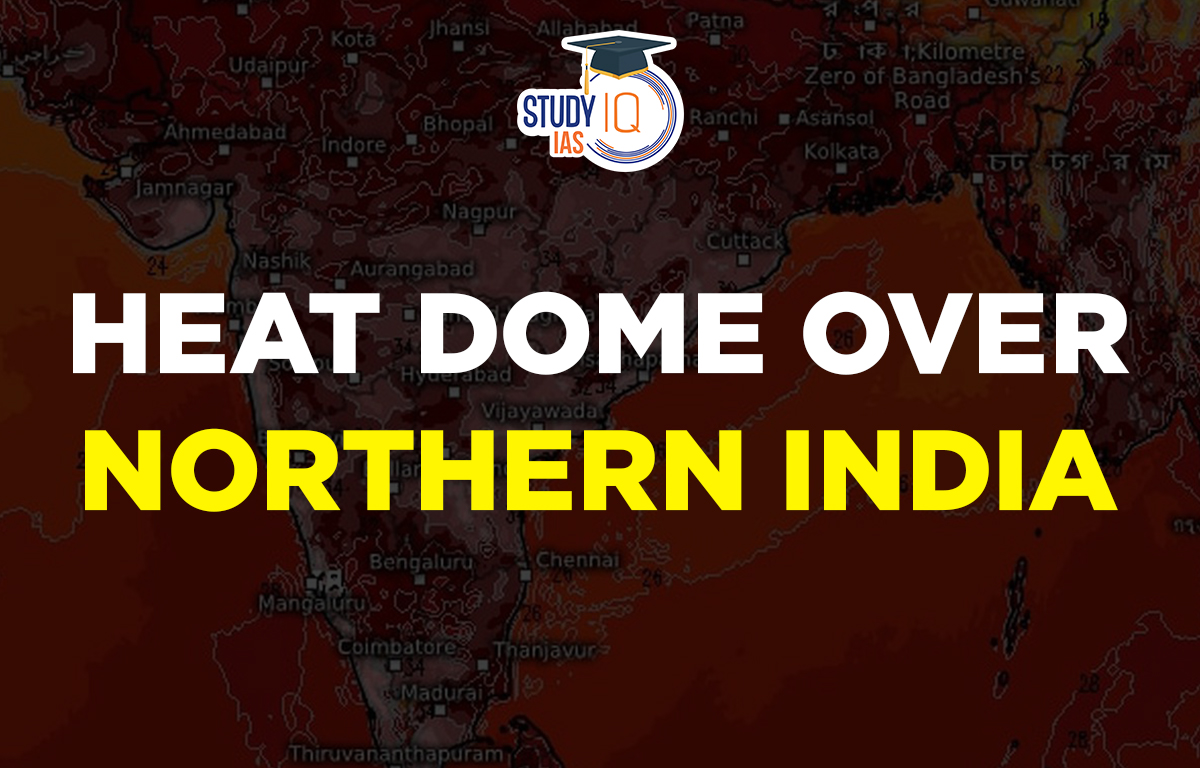Table of Contents
Context: India Meteorological Department (IMD) has recorded higher-than-normal maximum temperatures over north and northwest India.
Reasons for Higher-than-Normal Temperature
- Anticyclones are centres of high pressure from where winds blow out in every direction.
- The anticyclone over India sends warm winds from north-west to central and western India, causing heat waves.
- Strong anti-cyclonic circulation: It is driving the heat wave in Gujarat and Konkan, while the North-western states are bearing the brunt of the insufficient winter precipitation.
- Anti-cyclone over south Gujarat led to subsidence of air and the warming over the region.
- Absence of stronger western disturbances (WD): Weather in northwest India is primarily regulated by western disturbances.
- There has been no active WD in the region since January 29, due to which temperatures have gone up appreciably.
Western Disturbances (WD)
- They originate from the Caspian Sea and move across the Afghanistan-Pakistan region to bring rains across Northwest India.
- Lack of Rainfall: The country as a whole had logged just 8.9 mm rainfall, which was 71 per cent lower than its long period average of 30.4 mm.
- Heatwave Prediction: Weather agencies have predicted severe heatwaves this year.
- A heat wave is declared if the maximum temperature of a station reaches at least 40 degrees Celsius in the plains, at least 37 degrees in coastal areas and at least 30 degrees in hilly regions, and the departure from normal is at least 4.5 degrees.
- Heatwave is caused by a phenomenon known as the “heat dome”
About Heat Dome
- A heat dome occurs when an area of high-pressure traps warm air over a region, for an extended period of time.
- The high-pressure forces air to sink and once it reaches the ground, it gets compressed and becomes even warmer and drier, further raising the temperature of the area.
- Characteristics:
- Heat domes generally stay for a few days but sometimes they can extend up to weeks, which might cause deadly heat waves.
- They are more likely to form during La Niña years, when waters are cool in the eastern Pacific and warm in the western Pacific, creating vast areas of sweltering.

Impact on Agriculture
- High temperatures during the flowering and maturing periods lead to loss in yield.
- There could be a similar impact on other standing crops and horticulture.
- In March last year, the warmest recorded in the country since 1901, heat caused a decline of 2.5 per cent in wheat yields.
- Solution: To reduce the impact of higher temperatures, mulch material can be added in the space between two rows of vegetable crops to conserve soil moisture and maintain soil temperature
India Meteorological Department (IMD)
- It is the national meteorological service of the country and it is the chief government agency dealing in everything related to meteorology, seismology, and associated subjects.
- It is an agency of the Ministry of Earth Sciences of the Government of India.


 Fiscal Slippage, Causes and Implications
Fiscal Slippage, Causes and Implications
 Serious Fraud Investigation Office (SFIO...
Serious Fraud Investigation Office (SFIO...
 Article 142 of Indian Constitution, Sign...
Article 142 of Indian Constitution, Sign...





















